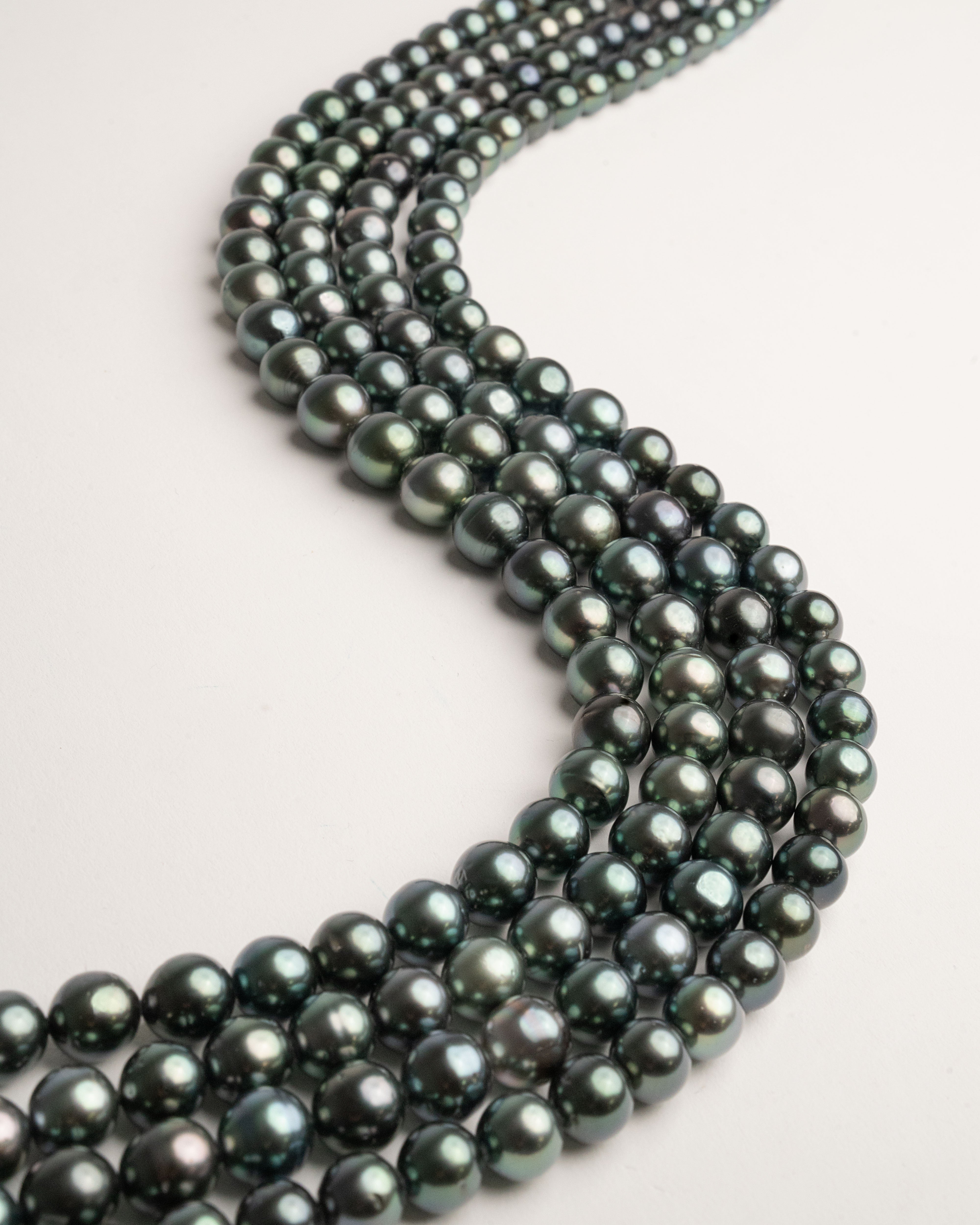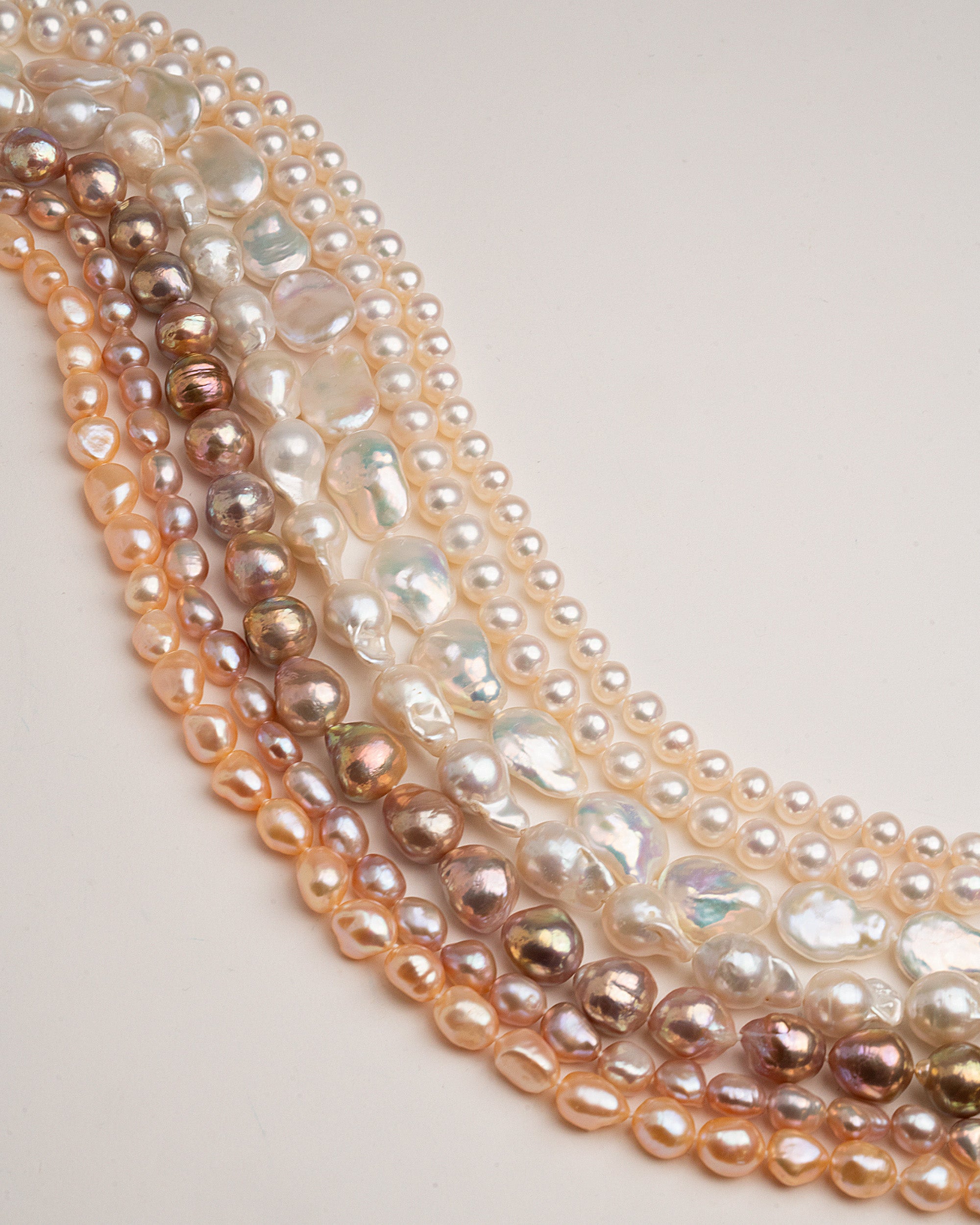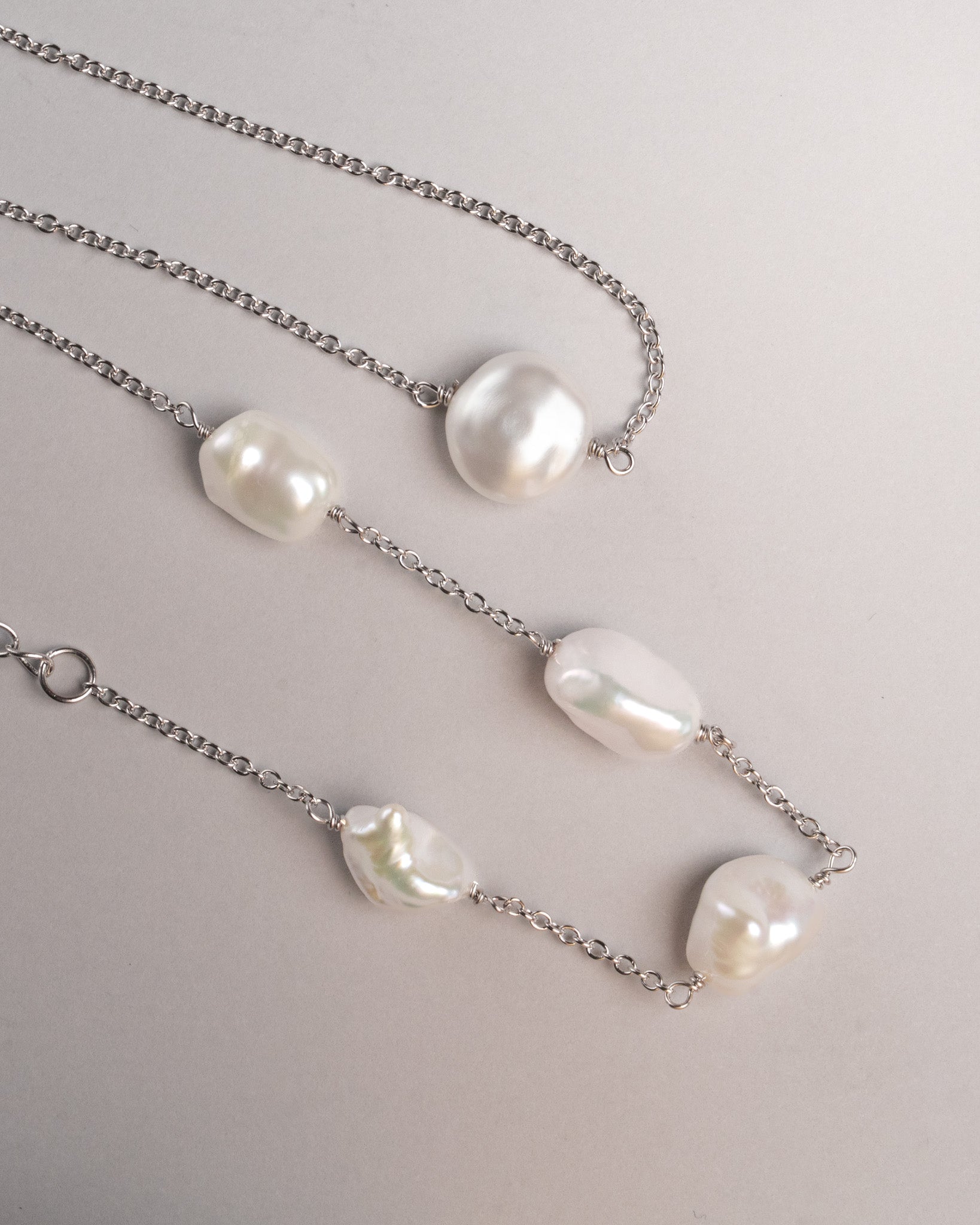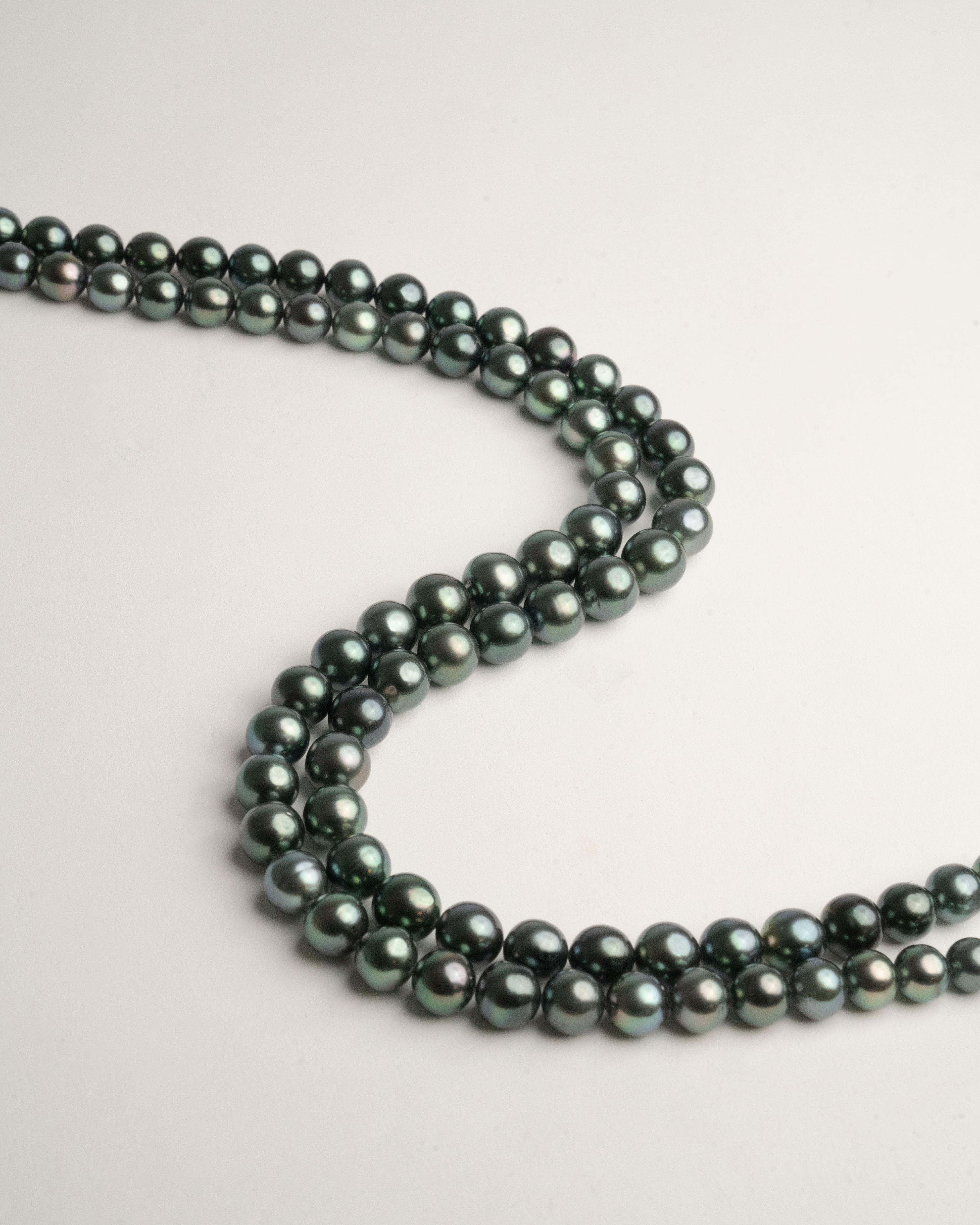Natural Pearls vs. cultured pearls
What you are looking for are Cultured Pearls. Unless of course, you are a Hollywood actor, a member of some nobility or a big industry magnate. Then maybe you want natural pearls.
All the pearls you see in jewelry stores, even the most exclusive ones, are cultured pearls. Natural pearls are often sold at auction and their price can reach exorbitant amounts.

Natural saltwater pearls exhibited at the Hong Kong International Jewelry Fair
The confusion is simple, the expression “Natural Pearl” is wrongly used to clarify that it is not an imitation pearl, but that is not the true meaning of “Natural Pearl”.
Natural or wild pearls are found by oyster collectors by chance. You have to open about 10. 000 oysters to find a decent quality natural pearl.
It is this scarcity that gives them their high price, not necessarily their beauty.
cultured pearls are real pearls that are grown inside real oysters or mussels at pearl farms in Japan, Australia, Indonesia , China and many other places, most of them in Asia.

Tahiti cultured pearl farm in French Polynesia
On the other hand, and this is where more confusion is created, some non-specialized jewelers call one of the different types that exist "Cultivated Pearls". In certain cases they call the cultured freshwater pearls, and the Japanese Akoya “cultured pearls”. and the Australian “Saltwater Pearls”; in other cases they call the Japanese Akoya "Cultivated Pearls", since they were the first pearls to begin to be cultivated.
The bottom line is that when it comes to buying pearls, you're looking for cultured pearls. The question is deciding what type of cultured pearls you are interested in.
The following is a brief description of the 4 main types of cultured pearls.
Freshwater cultured pearls
If someone offers "cultured pearls" but does not indicate the type of pearl, they are freshwater cultured pearls.
They are the most popular pearls today, thanks to their price and the number of shapes, sizes and colors available.
Freshwater cultured pearls can be pink, orange and purple as well as white, naturally, without any treatment.
Freshwater pearls used to be of very low quality twenty years ago, but today pearls are being produced that rival the best saltwater pearls in quality.
If you want to learn more about cultured freshwater pearls visit our article here.
Japanese Akoya Cultured Pearls
When you think of the typical round white pearl, not very large and with a very intense luster, you are thinking of an Akoya pearl.
The Japanese pearls stand out for their intense brilliance and their almost perfect round shape.
Historically they have been cultivated on the coasts of Japan, although nowadays they are also cultivated on the coasts of China, however, the latter have a slightly less intense brightness.
If you want to learn more about Japanese Akoya cultured pearls visit our article here .
Strands of Japanese Akoya cultured pearls with great brilliance.
Tahiti black pearls
They are the only "black" pearls by nature. It is important to understand that the term "black" is used to describe pearls of dark shades, including silver, gray, green, blue, brown, and purple, not necessarily pure black.
Despite their name, they are not actually grown on Tahiti, but on nearby islands in saltwater "atolls" off French Polynesia and Fiji.
If you want to learn more about Tahiti cultured pearls visit our article here.
Tahiti pearls in one of the oysters that create them, the Pinctada Margaritifera.
They are large and exotic pearls that only 20 years ago were sold at very high prices. Today, with the increase in production, they can be found for a much cheaper price.
Australian Pearls
The "Queen of Gems" and the rarest of all cultured pearls. They are cultured in salt water in Australia, Indonesia and the Philippines.
These are large pearls, white or gold, with a deep silky luster.
If you want the best pearls you can find, Australian pearls are for you. Take a look here at our collection of these fantastic and luxurious pearls.
If you also want to learn a little more about Australian cultured pearls, visit our article here.
Exclusive 17-20mm Australian pearl necklace on display at Hong Kong International Jewelry Fair, pearls larger than 15mm are really rare.








